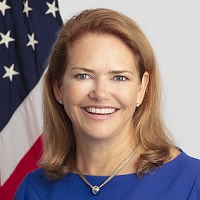
 By Janet Woodcock, M.D., Acting Commissioner of Food and Drugs, and
By Janet Woodcock, M.D., Acting Commissioner of Food and Drugs, and
Amy Abernethy, M.D., Ph.D., Principal Deputy Commissioner & Acting Chief Information Officer, FDA
Twitter: @US_FDA
With the near ubiquity of interconnected smartphones and computers in modern life, it can be difficult to remember just how quickly our familiarity with data has evolved. Data, in digital form, seem to be everywhere we look. Yet, we are still at an early stage in our ability to apply data to understand and treat disease and address other public health challenges. At this early stage, even small advances in our ability to gain useful insights from data can represent significant opportunities.
In September 2019, when we announced the U.S. Food and Drug Administration’s Technology Modernization Action Plan (TMAP) we spoke about the ways that the FDA is modernizing our approach to the use of technology for the agency’s regulatory mission, such as in the review of medical product applications and food safety, and other critical functions. Data modernization is the next step in the agency’s overhaul of its approach to technology and data, and we are pleased today to announce the Data Modernization Action Plan (DMAP).
Data have always formed the basis of the FDA’s science-based regulatory decision-making. These data may come from relatively traditional sources—for example, measurements submitted to the FDA from clinical trials or observations from FDA field inspections. As technology has become more sophisticated and our world has become more connected, data from many new sources are helping us understand how medical products are performing, how we can pinpoint the source of a foodborne illness, for example, or understand an emerging public health threat.
Data Sources Are Increasingly Diverse
Digitization of processes, pervasive use of mobile technologies, and easier access to computing resources have created new types of data. These data types and related technologies can be used to create innovative solutions to improve public health, such as:
- Capabilities to track and trace medical and food products can transform national response to emergencies by identifying product and logistic information across the entire supply chain.
- Integration of real-world and clinical trial evidence can increase representation of diverse populations. It can transform overall efficiency of product reviews and post market surveillance.
- Privacy sparing innovations can advance the evaluation of potential treatments for rare diseases while protecting patient specific information.
The new data strategy also calls for ways to scale agency work, such as the Advanced Semantic Search and Indexing of Text for Tobacco pilot to explore and build a model to scale search capabilities for complex tobacco submissions. Improved search capabilities based on context and intent will scale review, monitoring, and regulatory operations by reducing the burden of manual, inefficient processes on FDA staff.
Delivering Value Through Driver Projects Will Inform Modernization
The DMAP is anchored on driver projects that contribute to the FDA’s public health responsibilities in the near term while also building critical capabilities for the future. Driver projects for DMAP are defined as initiatives with measurable value that help multiple stakeholders envision what is possible, allow technical and data experts to identify needed solutions, and develop foundational capabilities. This strategy avoids the pitfalls of focusing on data collection first and only then looking for questions the data can answer.
The selected driver projects will not only address traditional performance indicators but will also support transformation across the agency by using predictive models, and appropriate application of trends, such as Artificial Intelligence (AI).
Promoting Consistent and Repeatable Data Practices Across FDA
A modern data strategy also requires proactive investments in foundational capabilities. Key components of Data Practices to achieve these goals are Identification; Data Curation; Governance; and, Automation.
For example, the Global Substance Registration System, designed by the FDA, in collaboration with the National Institute of Health’s National Center for Advancing Translational Sciences and the European Medicines Agency, provides consistent, auditable, quality and uniquely identified substance information for reviewers and scientists. Attention to data management practices such as use of international data standards, expert curation, stewardship and program area governance ensures that this data foundation is useful for all stakeholders.
Fostering a Strong Talent Network at FDA
It’s critical that the agency have a strong focus on talent and elastic talent networks, to ensure that the modernization plan will be swift, consistent and economical. For example, last year the FDA developed an agency-wide advisory matrix for surveillance inspections in less than six weeks by using data available from the U.S. Department of Health and Human Services and combining it with internal data. A small team of specialists and volunteers used agile methods to complete the project and launched it for use across the FDA and by state, tribal, territorial and local government liaison officers.
For each DMAP key element, the plan lays out the specific actions the agency will take to implement the strategy. We will assemble a cross-agency Steering Committee to support the planning and execution of the DMAP implementation. Our data plan will leverage the foundations laid by TMAP: a modern, cloud-forward technical infrastructure; a product-oriented approach, and enhanced collaboration. The two action plans will go hand in hand to realize the full potential and value of data and technology for the FDA and its stakeholders.
This article was originally published on FDA Voices and is reprinted here with permission.
